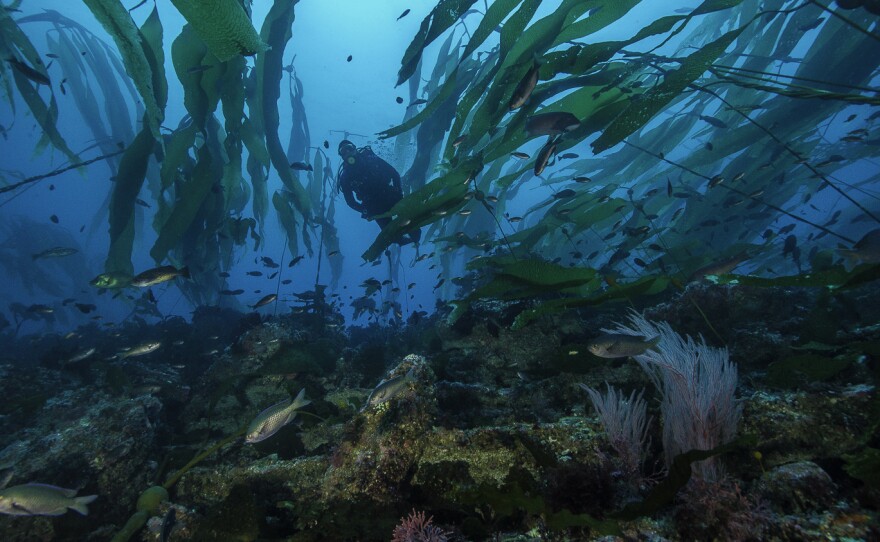A study recently published from the Scripps Institution of Oceanography finds the seven-year-old network of underwater parks are allowing marine species to reproduce in safe places.
Scripps researcher Samantha Murray said there are 11 marine protected areas in San Diego County. Some of them are in the open ocean. Others are in coastal lagoons.
Murray said the protected areas are designed to create a safe habitat where fishermen are prevented from poaching fish.
“So there are marine protected areas all over the world,” Murray said. “And there are loads of studies that show when you set aside areas underwater and just sort of leave them to nature. And let the wildlife and habitat inside, enjoy more of a natural state that we see bigger fish. More fish. Fish that are more resistant to stressors like starvation and oceanographic changes and sometimes we even see those fish spillover and replenish populations outside of protected areas.”
California has done a good job of monitoring its 850 square miles of underwater parks, according to Murray.
RELATED: In California’s Protected Waters, Counting Fish Without Getting Wet
She also credits the state with making a strong effort to understand what the protected areas need, so they work correctly.
And Murray recognized California’s efforts to monitor the regions so anglers do not fish in the restricted areas.
“If we can’t make sure people are following the rules the marine protected area isn’t going to be successful,” Murray said. “And California is investing, the state legislature is investing in making sure that enforcement is getting better all the time.”
Murray said the system is also designed to be flexible.
If officials feel like they want to protect more or less underwater habitats they can adjust the system.








